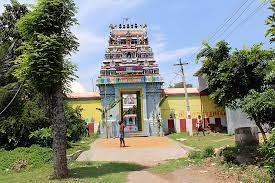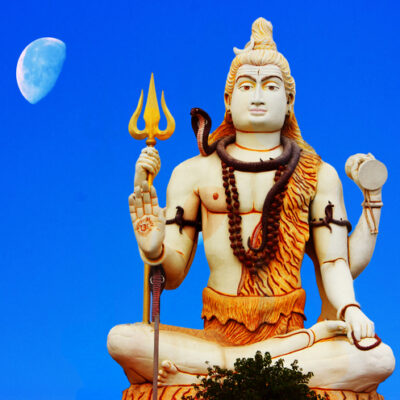Thirukudalaiyatrur Sri Narthana Vallabeswarar Temple, Cuddalore

Address
Thirukudalaiyatrur Sri Narthana Vallabeswarar Temple Thirukudalaiyatrur Kavalakudi Post Kattumannar Koil Taluk Cuddalore District Tamil Nadu – 608702 Tele: +91 4144 208 704
Diety
Sri Narthana Vallabeswarar, Sri Nerikattu Nathar Amman: Sri Parasakthi, Sri Gnanasakthi.
Introduction
Narthana Vallabeswarar Temple is a Hindu temple dedicated to the deity Shiva, located in Thirukoodalaiyathoor, a village in Cuddalore district in the South Indian state of Tamil Nadu. Shiva is worshipped as Narthana Vallabeswarar, and is represented by the lingam. His consort Parvati is depicted as Gnanasakthi and Parasakthi. The presiding deity is revered in the 7th century Tamil Saiva canonical work, the Tevaram, written by Tamil saint poets known as the Nayanars and classified as Paadal Petra Sthalam. The temple complex covers around half acre and entered through a three tiered gopuram, the main gateway. The temple has a number of shrines, with those of Narthana Vallabeswarar and his consorts Gnanasakthi and Parasakthi, being the most prominent. All the shrines of the temple are enclosed in large concentric rectangular granite walls. Theertham (Holy water): Brahma Theertham, Agasthia Theertham, Karthiyayana Theertham, Vellaaru, Manimuthaaru, Akaya Gangai and Sangama Theertham. Sthala Vriksham (Sacred Tree): Banyan Tree (Kallala Maram)
Puranic Significance
Koodalaiyatrur is on the confluene of rivers Vellaaru, Manimuthaaru and Akaya Ganges (an invisible river), hence the place is known as Koodalaiyatrur and “Thiruveni Sangamam”. This place is also known as “Dakshina Prayagai” as the river flows from south to north.The legend is that a Chola King Dhinakaran, suspecting his wife of infidelity, killed her and thus incurred the “Srihathi Brahmahathi dosham” – the sin accrued by the act of killing. Due to his sins, he lost his kingdom and started wandering as a lunatic. One day he saw a dog with skin diseases following him. It fell in a river and came back healthy and beautiful. The king was surprised to see the change in the dog and wanted to try for himself by taking a dip in that river. After the dip, he also felt afresh and got relieved from his sins. He also got back his kingdom and built this temple on the banks of the confluence of the two rivers and named the place “Thiru Koodalai Atrur” meaning the confluence of the rivers. However, this temple was washed away by a severe flood in the river but later the idols were recovered and reinstated in the reconstructed temple. Another legend associated with this temple is that Lord Brahma and Goddess Saraswathi visited this temple and worshiped Lord Shiva here. Lord Brahma requested the lord that he wanted to see the dance performance (Narthanam) which the lord performed in Chidambaram for Rishi Viyagrapathar and Rishi Pathanjali. Lord Shiva acceded Lord Brahma’s request and performed his dance for Lord Brahma and Goddess Saraswathi. Hence, the lord here is also called “Narthana Vallabeswarar”.Another legend is that Sage Karthiyayanar, son of Sage Agasthiyar, prayed to the lord of this temple in order to be blessed with a daughter. The sage found a girl child playing with the lotus leaves in the Manimutharu river near this temple. He took the child with him, named her Ambujavalli and raised her as his own daughter. When Lord Mahavishnu took the Varaha Avataram, he found that his consort was missing. He visited this temple and prayed to Lord Shiva for his reunion with Goddess Lakshmi. Lord Shiva advised Lord Mahavishnu to marry Ambujavalli and informed him that she is none other than Goddess Lakshmi herself. It is believed that Sage Agasthiar worshiped the lord of this temple and sought his blessings in order to help him retain the arts and knowledge that he had learnt so far. It is also believed that Sages Vanmeeki and Kannuva visited this temple and worshiped the lord. Another legend is that when Saint Sundaramurthy was travelling to Thirumudhukuntram (Viruthachalam), Lord Shiva appeared before him in the form of a Brahmin (andhanar). The saint asked him the way to Viruthachalam but the andhanar directed him to this temple by saying “Koodalaiyatrurirku vazhi ikthu” (This is the way to Koodalaiyatrur) and asked him to follow him. On reaching this temple the andhanar disappeared. The saint then realised that the Brahmin was none other than Lord Shiva himself. While rendering his pathigam, the saint finished each stanza of his song by expressing his surprise in not being able to identify the Brahmin as Lord Shiva.
Beliefs
Since Lord Brahma and Goddess Saraswathi are believed to have worshiped Lord Shiva, Goddess Gnanasakthi and Goddess Parasakthi in this temple, devotees believe that worshipping the deities here will give them the gift of knowledge and wisdom. Secondly, as Sage Agasthiar worshiped the lord of this temple so as to not forget the arts and knowledge that he learnt so far, devotees worship the lord here seeking a similar blessing. This is also a parihara sthalam for those who born during the periods of Bharani and Makam nakshatrams (constellation). Devotees whose birth nakshatram are Bharani and Makam visit this temple for poojas.
Special Features
This is one of the 276 Devara Paadal Petra Shiva Sthalams and 3rd Shiva Sthalam in Nadu Naadu. Lord Shiva in this temple is a Swayambumurthi (self-manifested). This temple was destroyed by the flooding of Manimuthaaru river and has been reconstructed after that. This temple has a single corridor and its main tower (Rajagopuram) has 3-tiers. The Moolavar vimanam (shrine of the main deity) has two tiers. There is no flag post in this temple. The last Consecration ceremony (Kumbhabishekam) took place on 08.02.2015. Prior to this, the consecration ceremony was held on 29.08.1961. In the outer corridor, idols of Lords Amutha Vinayakar, Kasi Viswanathar, Murugan with his consorts, Natarajar, Dhakshinamoorthy, Lingothbavar, Brahma, Vishnu, Kala Bairavar, Bairavar, Suryan, Chandran, Chandikeswarar, Nalvars and goddess Ashta buja Durgai can be seen. There is no Navagraham here but only a separate shrine for Lord Sani. He is respected as “Pongu Sani” – meaning Lord Sani who gives prosperity. There is a separate shrine for Sage Agasthiar in the outer compound wall of the temple.
Festivals
13-days Brahmotsavam during Masi Magam in the Tamil month of Masi (February-March) is celebrated in a grand manner here. Other major festivals celebrated here are Mahashivratri, Arudra Dharisanam and Annabishekam. Pradosham is also observed regularly.
Century/Period/Age
1000 to 2000 years old
Managed By
Hindu Religious and Charitable Endowments (HRCE)
Nearest Bus Station
Thirukudalaiyatrur
Nearest Railway Station
Virudhachalam
Nearest Airport
Puducherry









